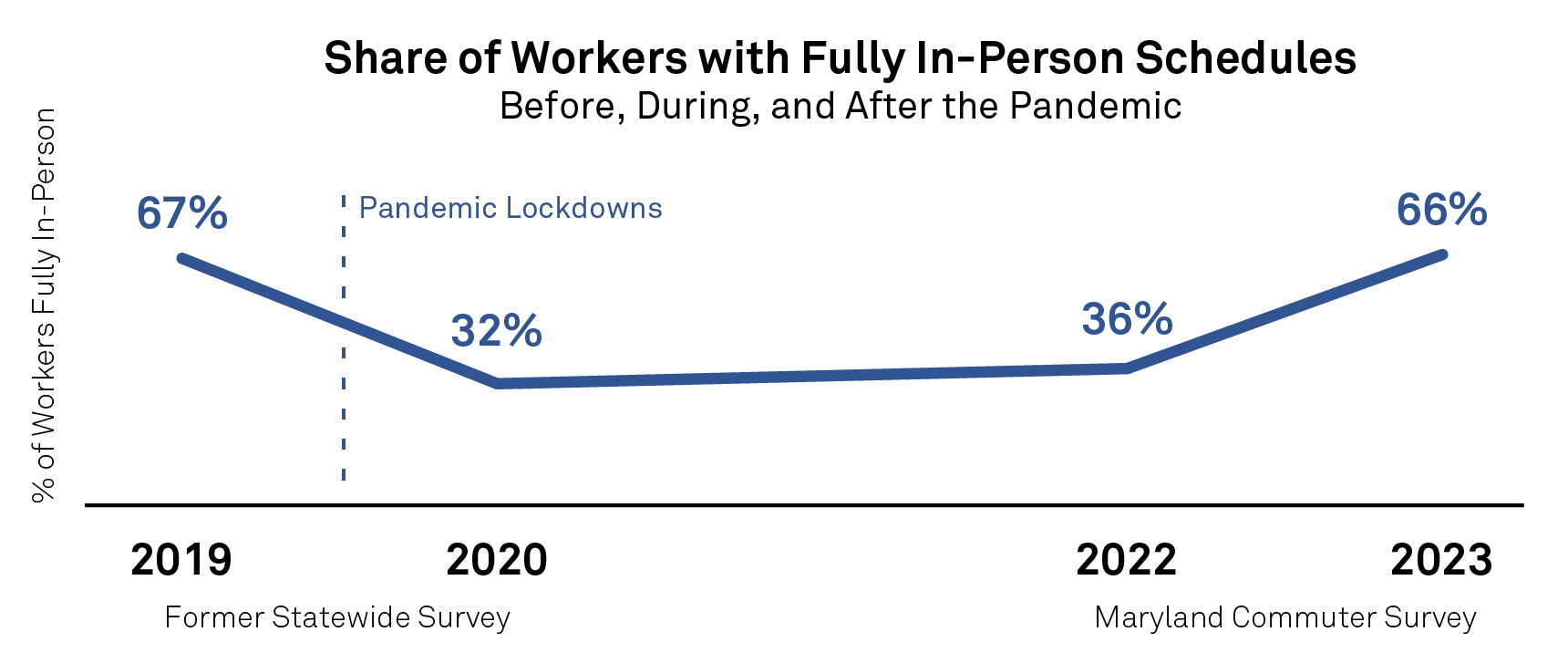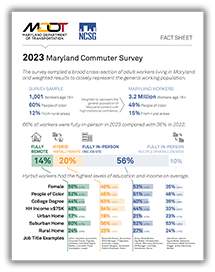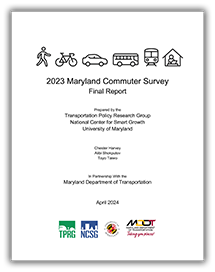2023 Maryland Commuter Survey
The Maryland Commuter Survey (MCS) is an ongoing project conducted by the Transportation Policy Research Group at the University of Maryland in partnership with the Maryland Department of Transportation (MDOT). It provides an annual snapshot of commuting patterns, as well as longitudinal trends as the survey is conducted year-over-year. The 2023 MCS, the survey’s second iteration in its current form, shows how workers across the state have adjusted their work and commuting patterns as the state continues to emerge from the pandemic. This and future versions of the survey will track how workers commute amidst developing economic opportunities and challenges, and preferences about where they live and work. While the MCS focuses on commuting, it also captures other aspects of how workers live, work, and travel, shedding light on how commuting patterns relate to Marylanders’ broader lives.
Key Findings from 2023

Fully In-Person Work Returned to Pre-Pandemic Levels
- 66% of Maryland workers had fully in-person schedules, similar to 2019.
- 20% of workers had hybrid schedules; 14% were fully remote.
- Hybrid workers had the highest average education and income levels.
- More than half of fully in-person workers would have preferred to more telecommuting.
Hybrid Workers Had an Outsized Impact on Rail Transit
- Hybrid workers disproportionately commuted by rail modes and commuted most often in the middle of the work week, leading to measurably higher rail demand on these days.
- Transit mode share remained relatively low. Eleven percent (11%) of commutes were by bus or rail transit, 69% were by auto modes, and 17% were by telecommuting.
Commute Distances Increased
- Commutes were measurably longer in 2023 than in 2022. This may have been due, in-part, to workers who previously worked remotely shifting to hybrid or in-person schedules, consistent with the decrease of fully remote workers since 2022 and the tendency for remote workers to live farther than in-person workers from their employers.
- Longer commutes reduced the feasibility of active and transit modes, with implications for transit ridership, VMT, and carbon emissions.
Workers Were Satisfied with Maryland Transportation Systems
- Workers tended to be satisfied with MDOT, but there was room for improvement.
- Urban and suburban workers were more satisfied than rural ones. This coordinated with higher satisfaction among workers of color.
- Workers felt that transportation did not limit their job opportunities and that they could use transit as much as they wanted to.
Documents
| Publication | Date |
| 2023 Maryland Commuter Survey Fact Sheet | April 2024 |
| 2023 Maryland Commuter Survey Final Report | April 2024 |
| 2022 Maryland Commuter Survey Fact Sheet | March 2023 |
| 2022 Maryland Commuter Survey Final Report | March 2023 |


